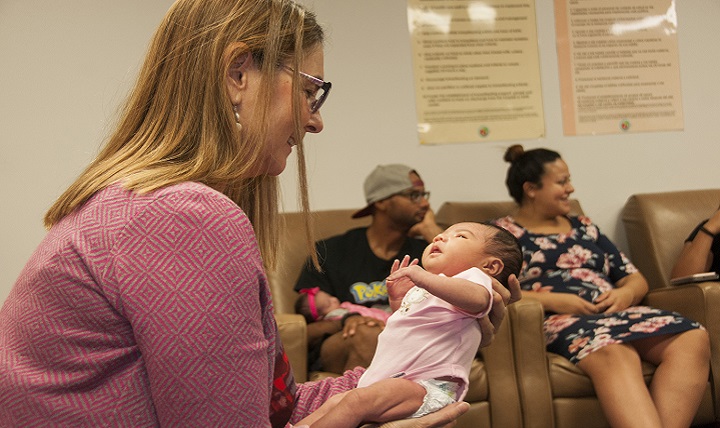In this first of our ‘PhD updates’ posts, Nikoletta Komvoki tells us about her work on the implementation of GIRFEC in Scottish health visiting.
Children’s services working seamlessly: Lessons to be learned
by Nikoletta Komvoki
The notion of children’s services working in collaboration has become key in policy initiatives of various countries around the world over the past decades. Scotland has been one of them. Recent Scottish Acts and policies, like Getting it Right for Every Child (GIRFEC), provide guidance to support practitioners to work more effectively and in a more joined up way to support all children. This policy has placed an emphasis on the development of ‘seamless services’ between health, social care, education and others, to work collaboratively to improve outcomes.

Although GIRFEC paints a ‘pretty picture’ on paper, not much is actually known about what health visitors and families think about this notion of multi-agency work or how health visitors enact such collaborative working. Is the provision of children’s services more seamless after the introduction of this new policy framework in Scotland? What are the tensions identified its implementation in health visiting? Do parents find multi-agency collaborative, or do they find it intrusive? And what tensions do health visitors experience in balancing the right to privacy against mutli-agency collaboration, particularly in relation to the requirements of information sharing? My research study aimed to explore these issues, to highlight the tensions in multi-agency work are for different parties, what works, what doesn’t and how multi-agency work could improve in health visiting practice.
To address these aims, I have spoken to health visitors, parents and a small number of pre-school aged children, to find out how each experiences and sees health visiting in a ‘post-GIRFEC’ world. I have also analysed Scottish documentation the policy and practice landscape, by exploring policy, assessment tools, service websites, etc., to see what these can tell us about multi-agency practices.

Initial findings suggested that, post-GIRFEC, health visitors had concerns about the formality accorded the role within the new policy framework, and particularly worried that this would position their work as intrusive rather than supportive for families. However, this was not borne out in my interviews with parents, who valued the formal role, and the clarity and reassurance that the framework offered to them as parents. On the one hand, parents acknowledged that sometimes, closer working between social care and health visiting might make them feel wary about the potential for intrusion from social care. Nonetheless, they felt the principles of GIRFEC in relation to the health visitor role gave them a robust framework if challenges did emerge within the family.
The analysis of the data is still in progress. The findings are to be published in Autumn 2020.